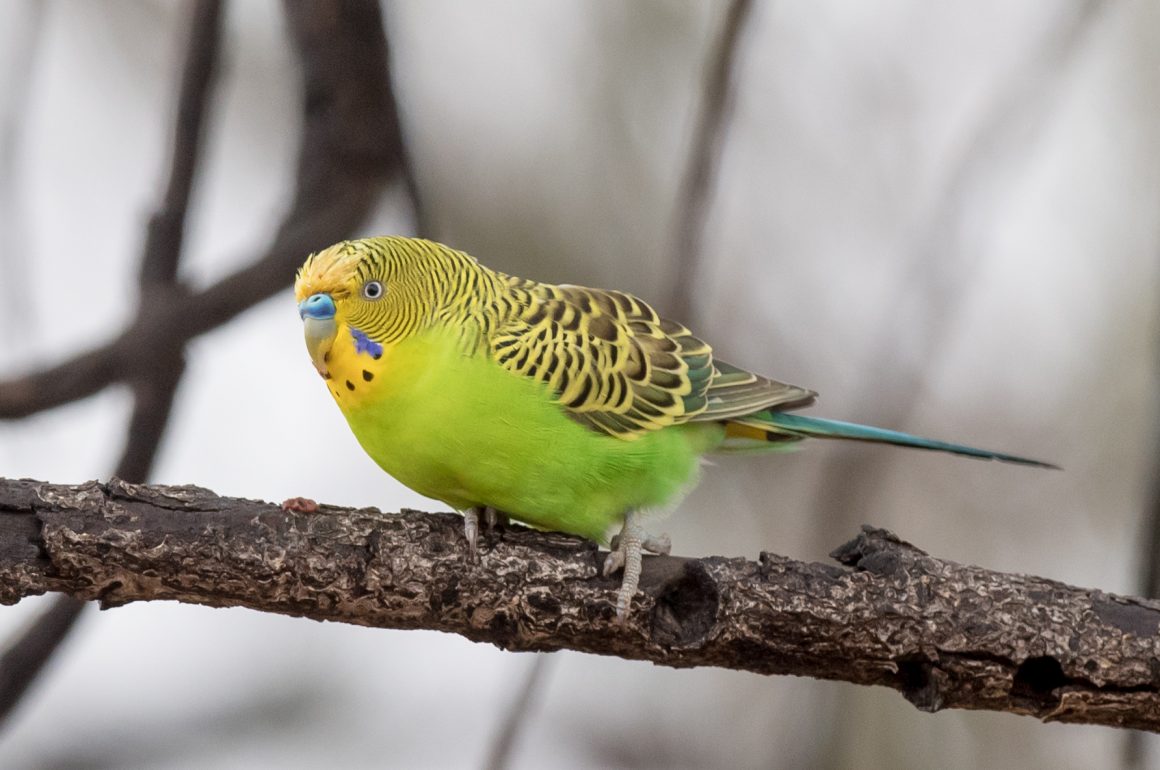
When I was a kid (and don’t you hate it when blog posts start like this, with the author apparently just assuming that you care about how he spent his childhood), the first pets we had were a pair of Budgerigars.
We even had some chicks – not that this was a big achievement. According to Tim Low (in “Where Song began”), “so easy were they to breed that by 1859 they cost less to buy in London than in Sydney.” Funny how the difficulty of breeding a species can be illustrated in simple monetary terms.
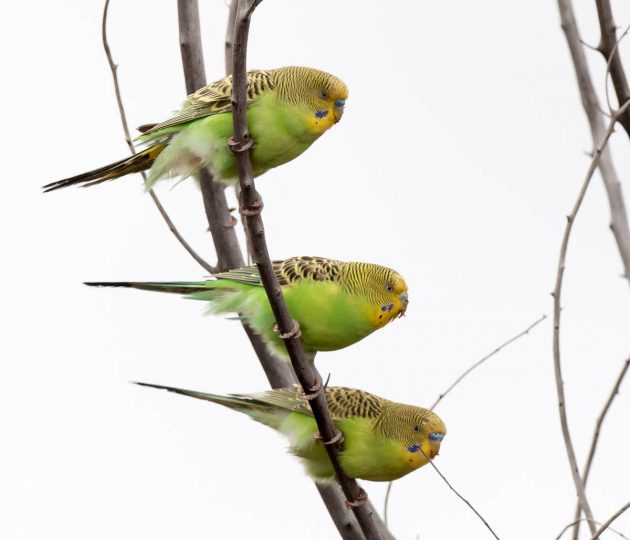
I saw them at Ayers Rock which while I was there had the worst floods in memory (my parents in Germany thought I must be traveling under a bad star, as they heard about these floods in the German news and knew I was there at that time). But that may have helped me to see them – the species is quite nomadic and settles wherever there is rain.
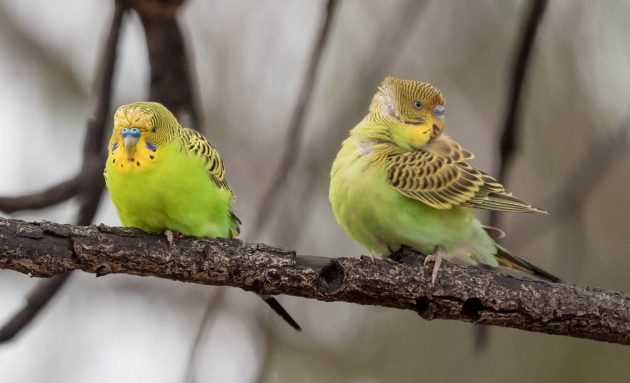
Good to finally see them outside of cages.
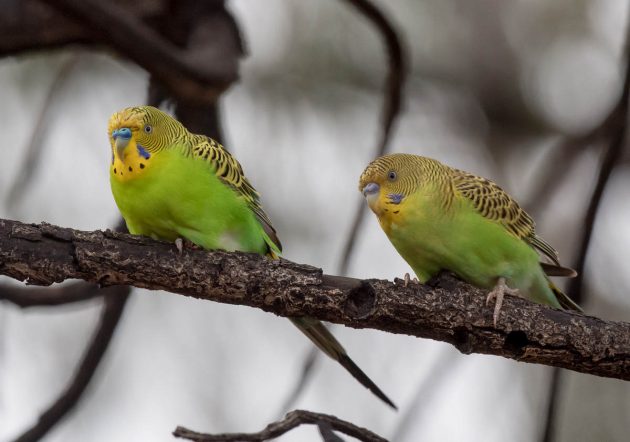
Much to my chagrin, the Australian White Ibis is a different species than the Sacred Ibis (though at some point they were regarded as conspecific, and the Australian species is still sometimes called Sacred Ibis)
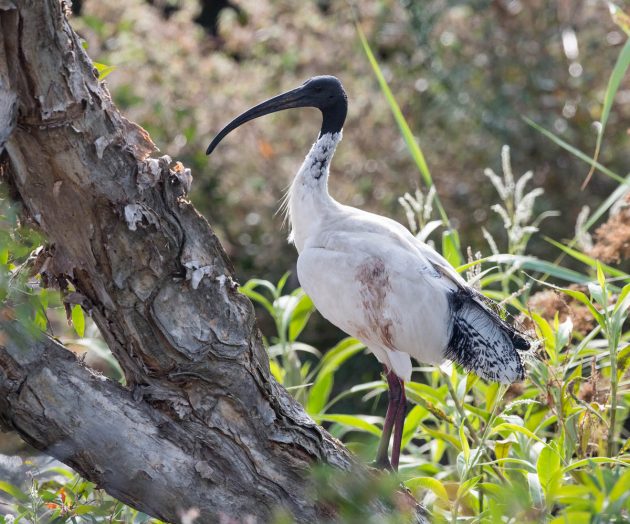
The Sacred Ibis was very important for the ancient Egyptians as it arrived with the annual Nile floods and the Egyptians gave them credit for these floods.
Being sacred may not have been that great for the Ibis in Egypt though – apparently, mummies of the Ibis are by far the most common bird mummies found there. And it seems that most of these mummified birds came from the wild rather than being specifically domesticated, according to DNA studies.
The Sacred Ibis was seen as the incarnation of the god Thoth, who (with gods apparently better at multitasking than humans) was (or maybe still is, who knows?) was responsible for maintaining the universe, judging the dead, and for writing and science (source). Possibly also for doing the dishes.
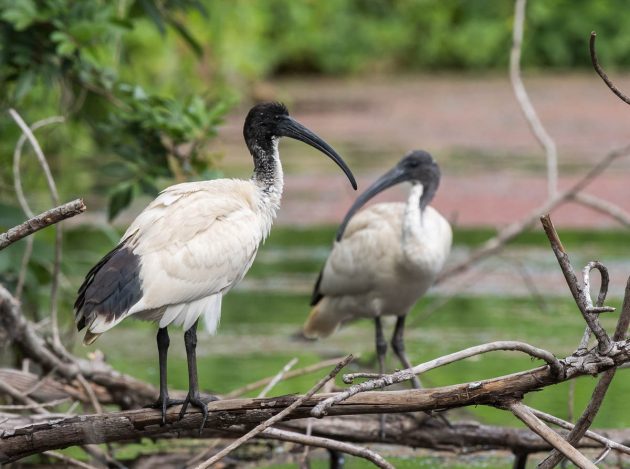
Ok, back to the (presumably non-sacred, certainly non-mummified) Australian species.
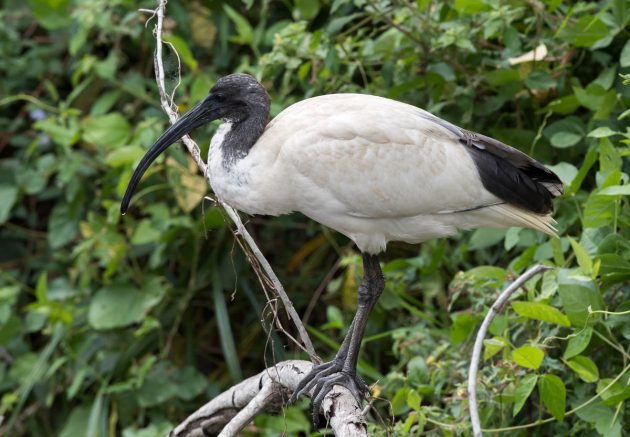
It seems this bird can be a bit of a problem bird – Wikipedia reports that “They are even known to snatch sandwiches from picnickers”. This may lead to “surplus birds being relocated”, “however, the birds returned in a few days”.
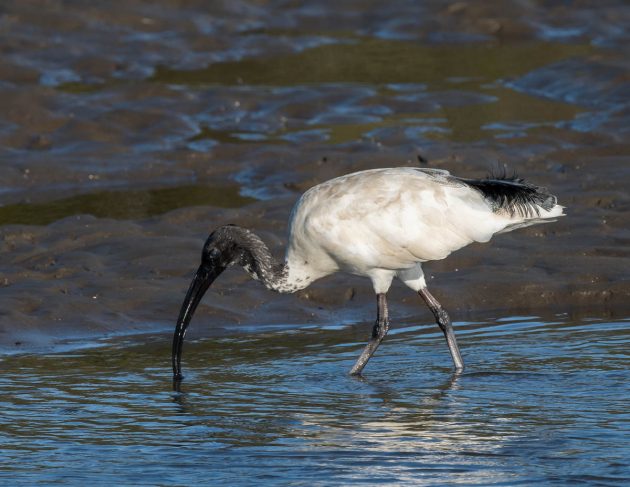
How would you feel if somebody told you you are a surplus bird? I would go and grab your sandwich, I am sure …
As it is customary in the ornithological world, if a bird is called Black-faced Cuckoo-Shrike, you can be almost certain it is neither a cuckoo nor a shrike. The species gets a consolation prize for being genuinely black-faced though. There is a redeeming quality in partial honesty.
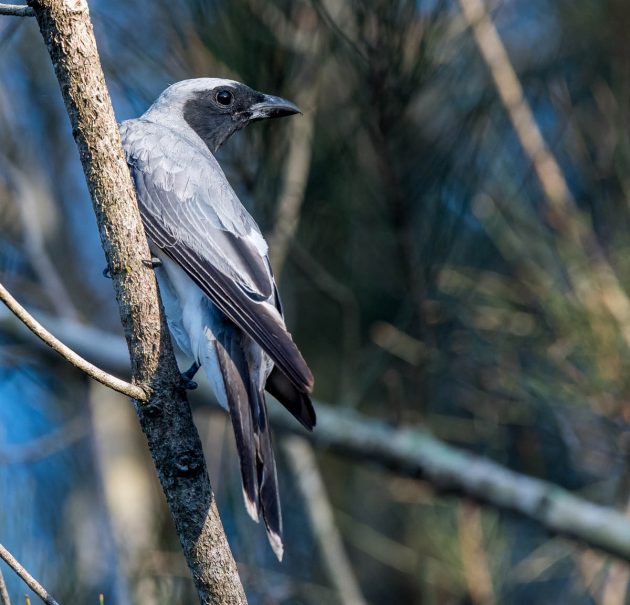
If you are a bit deranged and like to read about animal diseases (you know who you are), I recommend checking out the paper “Poxvirus infection in a Black-faced Cuckoo-shrike“
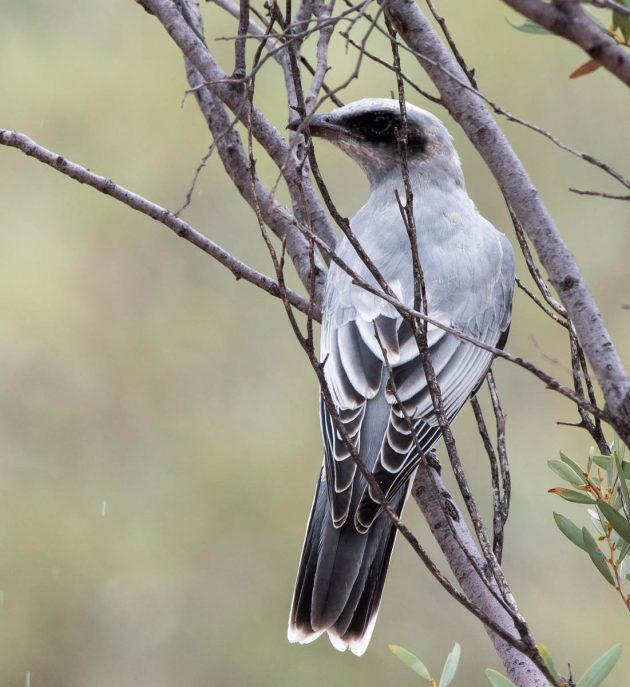
“The nest is remarkably small for the size of the bird. It is a shallow saucer of sticks and bark, bound together with cobwebs.” (source)
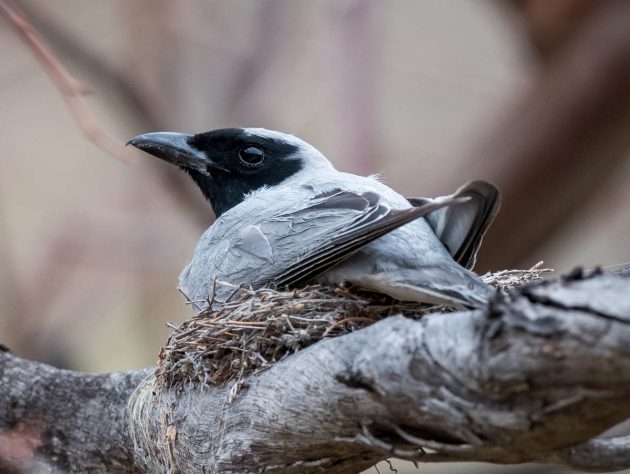
I am not big on poems – I guess I am a bit too scientifically-minded for that. If your mindset is different, you may want to check out this poem about the Black-faced Cuckoo Shrike (by Francis Duggan). Not sure about rhyming “aggressively” with “territory”, but then – as I said – I am not into poems anyway.
Talking about Australian birds means coming back to honeyeaters – the White-plumed Honeyeater now. While these birds look rather cute for honeyeaters, they aggressively defend their territories.
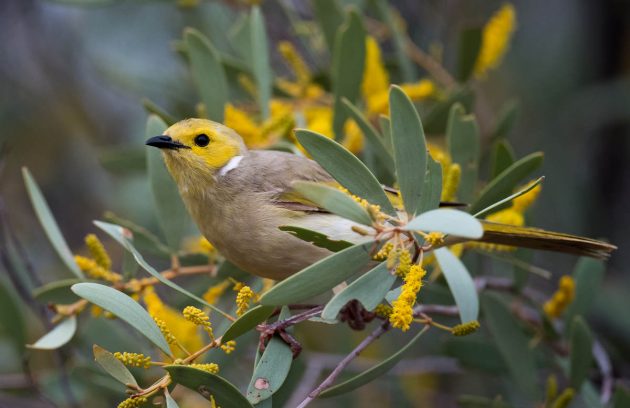
They also defend their chicks, both by feigning injury (to distract and lure the threat
away from the nest) and by using aggressive behavior (chasing, where an adult honeyeater flies at an intruder and forces it to leave the area, and arcing, where an adult hovers back and forth above the intruder).
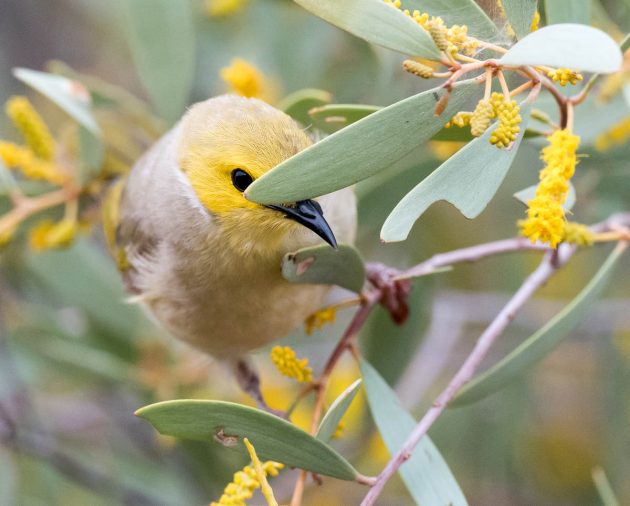
The Spiny-cheeked Honeyeater is bigger but also both social and aggressive.
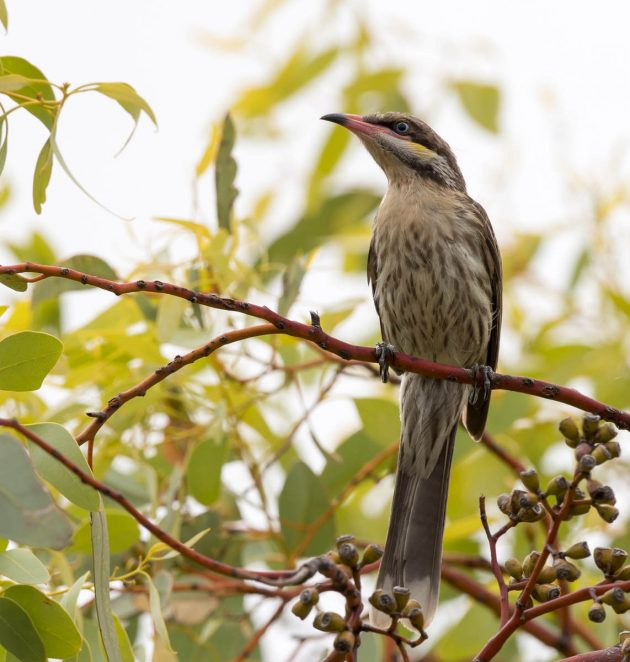
In a paper published in 1938 (!), Edith Coleman posts that a brooding bird of the species deliberately concealed itself, stating that it “was conscious of being invisible to me, in the position she invariably adopted when aware of my proximity. Although a plump bird, it was surprising to note how much of her body she managed to conceal.” Sounds a bit speculative to me.
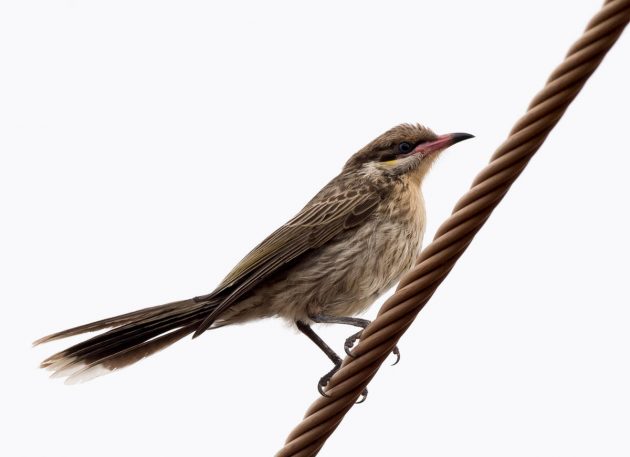
She also gives a rather moving description of the call of the bird: “In a minor key, is one of the most haunting of bird calls: ‘It hath caught a touch of sadness, yet is not sad. It hath tones of clearest gladness, yet is not glad.'”
Tim Low (in “How Song Began”) gives a colorful description of Long-billed Corellas, stating that they “have drooping bills like witches’ noses” and explaining that “Their ‘noses’ are long because, like many mammals, they grub up juicy roots – or used to.”
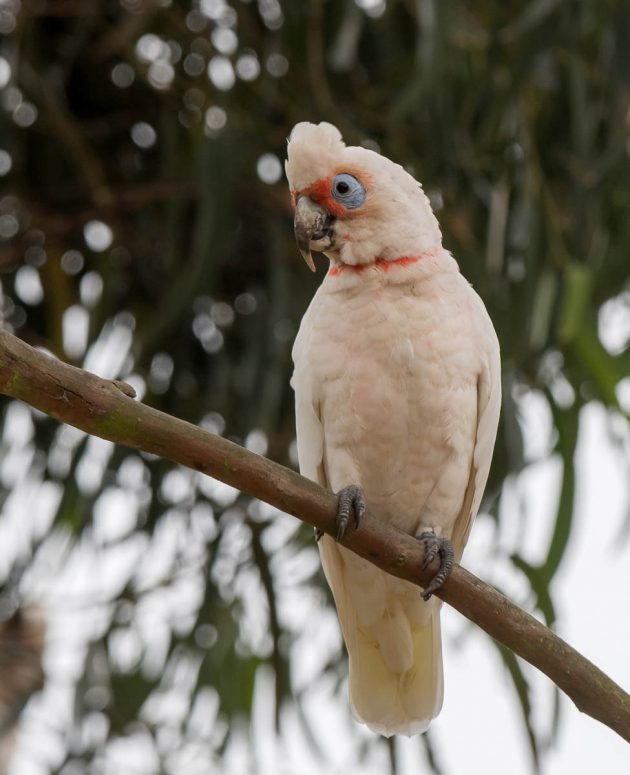
He continues to describe how the introduction of sheep to Australia affected both the Aborigines and the Long-billed Corella:
“They once ate murnong, a daisy whose tubers sustained Aboriginal people, until the sheep of the squatters grubbed it up, bringing ‘deprivation, abuses and miseries’, as one missionary wrote. Two ways of life folded at once. The Aborigines turned to handouts of flour, the birds to weeds and fields of ripening grain.”
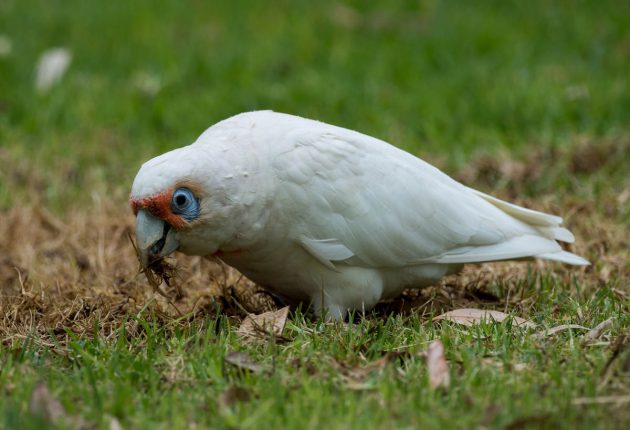
Humans predictably react by blaming the victim (Wikipedia):
“Long-billed corellas are viewed as agricultural pests, particularly in western Victoria and Western Australia. They can create significant crop damage … Permits are regularly issued in Western Australia and sometimes issued in Victoria for the culling of this species.”
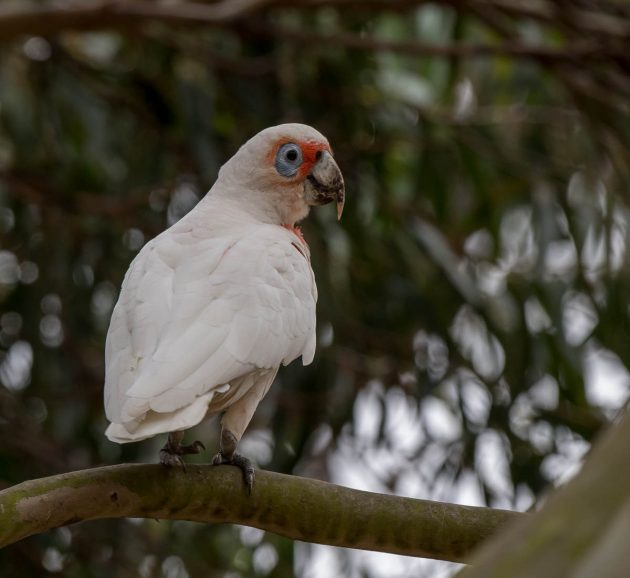
At the same time, they are popular as pets, as they may be the best talkers of the Australian cockatoos. Talk about schizophrenia.
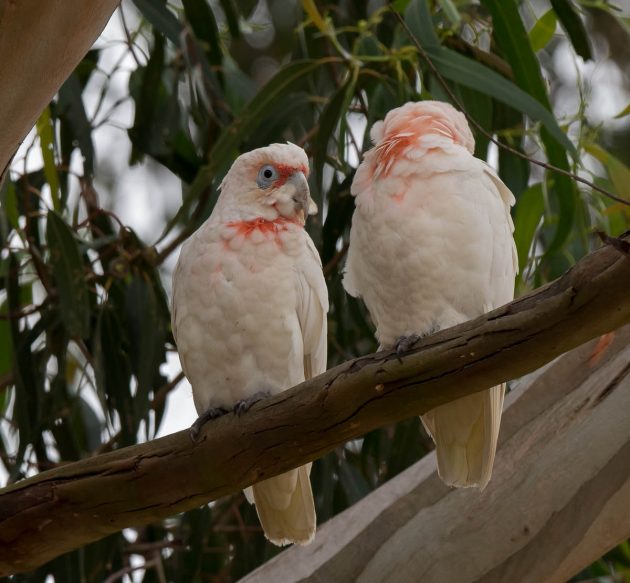
“The slender-billed cockatoo (long–billed corella) is a very affectionate, easy-going pet bird and one of the best talking parrots” (source)
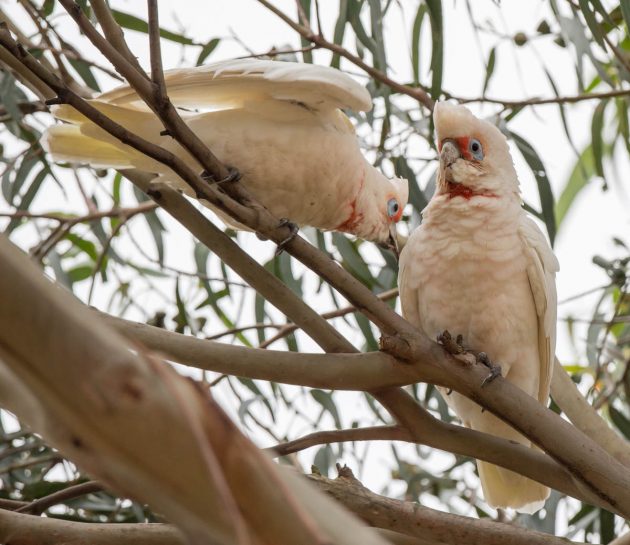
I did not see many raptors in Australia, which must have been entirely my fault as there are quite a few species. I did see the Black-shouldered Kite, which looks quite a bit like the Black-winged Kite we have in Shanghai.
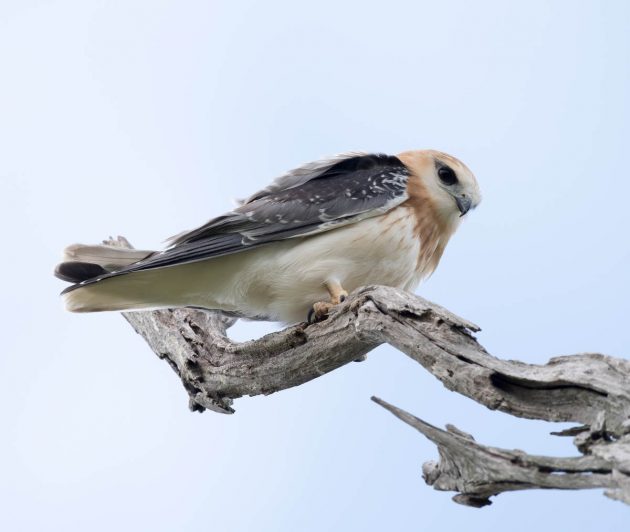
It seems these birds are not aware that while shoulder patches were fashionable in the 1980s, they are kind of out-of-date now.
The website SimplyEighties.com gives the following explanation: “During the 80s, power-dressing was used by the increasing number of working women to give them an authoritative look in an environment dominated by men. The style was mainly achieved by the use of shoulder pads which were used in suits, dresses, and jackets to give a broader look to the shoulders.”
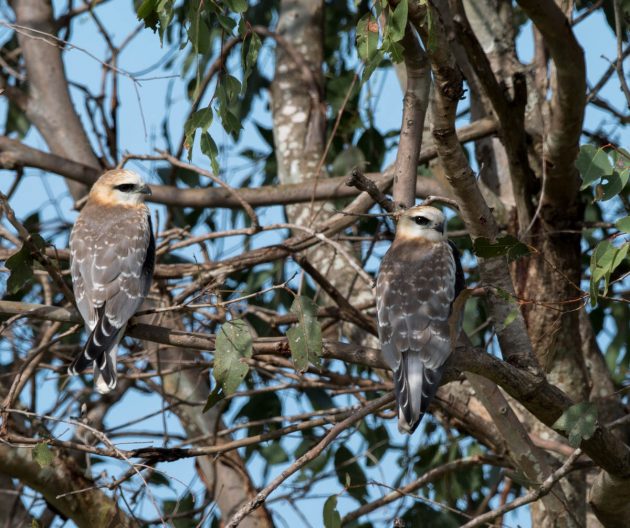
Somebody should have warned the poor kites not to copy everything that humans do. In fact, it seems the juveniles (shown in the photos) are aware of that – only the adults have proper shoulder pads. I guess we have to be thankful they do not also wear leggings.
Is it offensive to say that Australian Zebra Finches breed like rabbits? The following passage on a pet care webpage certainly seems to suggest they do:
“All finches are social and should be kept in pairs. A male and female pair will usually breed quite readily, so you may want to consider keeping only females.”
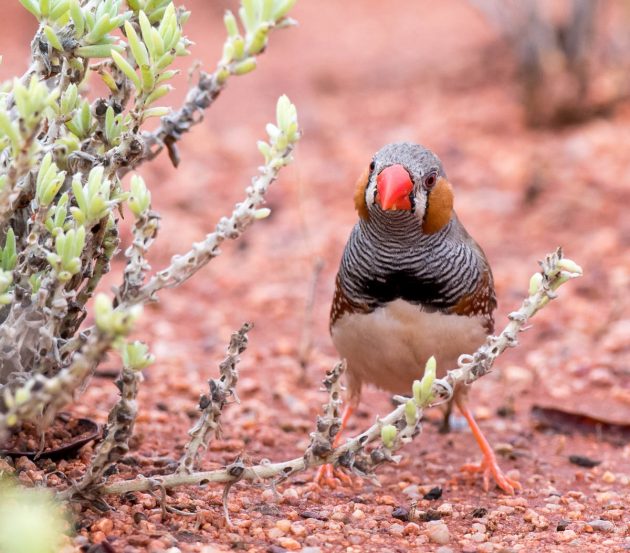
It seems I only got photos of a male though – the female does not have the chestnut-colored ear-coverts.
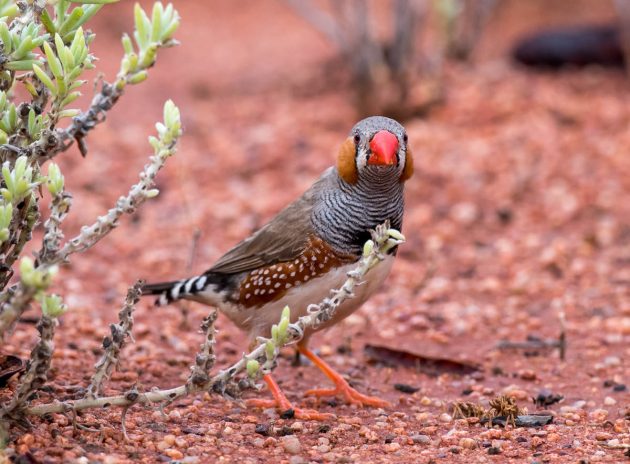
Even in the wild (these photos were taken near Ayers Rock), they still look like cage birds to me. My fault, I know.
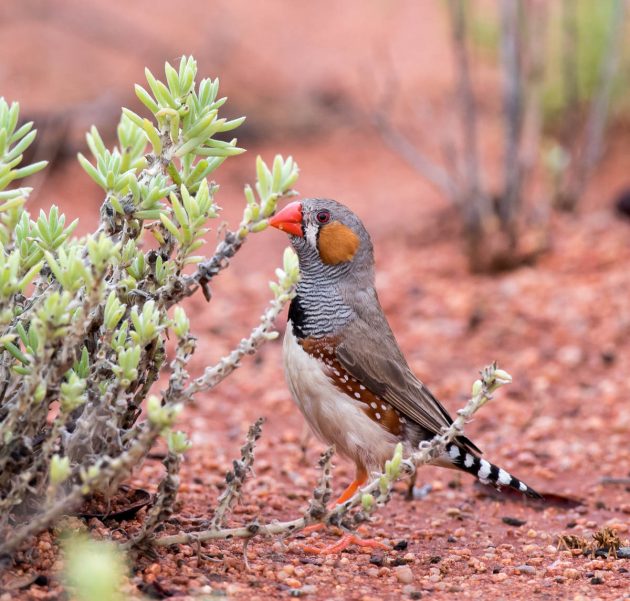
The quirkily titled article “Why Love Matters to a Zebra Finch” describes how pairings based on female preferences rather than on chance had much higher reproduction rates.
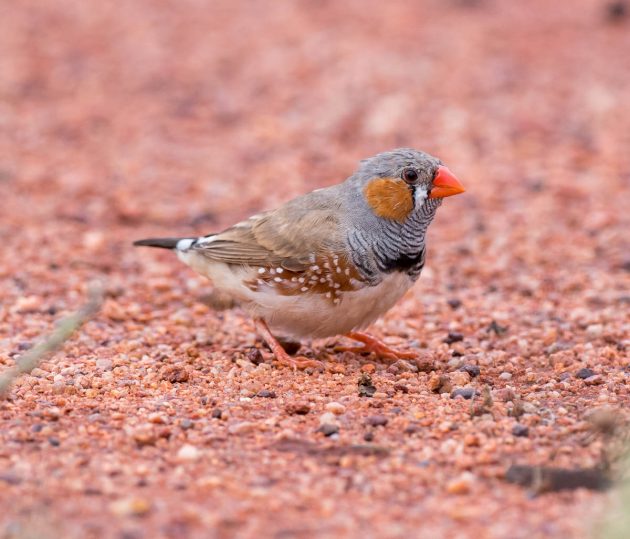
The random partnering did not bother the males. So typical.
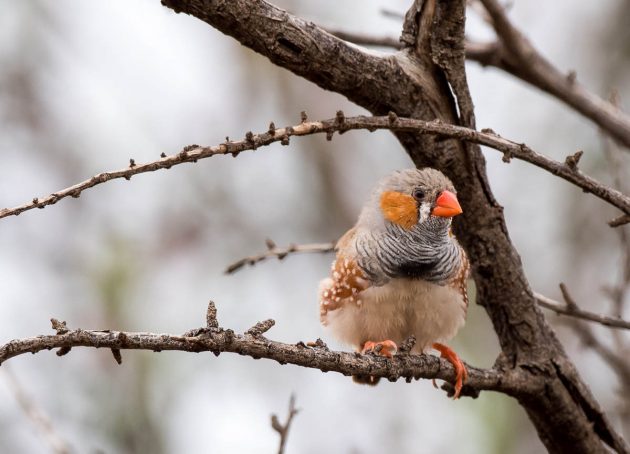
The Chestnut-breasted Mannikin apparently is also known as the bully bird in Australia – not sure whether this is because they can be a bit dominating at times or just because they have a poor PR department.
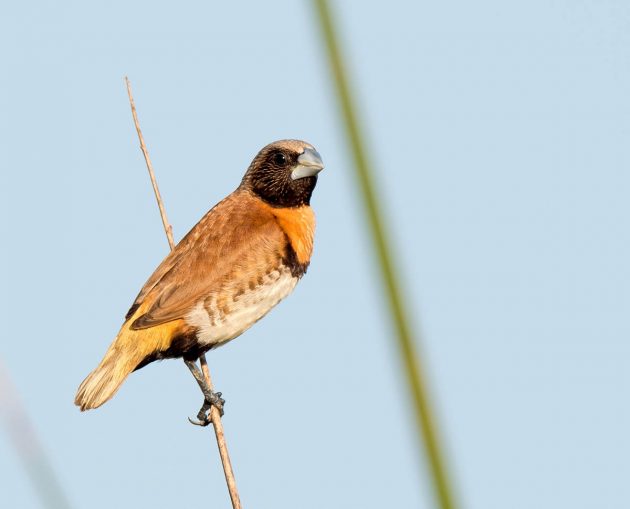
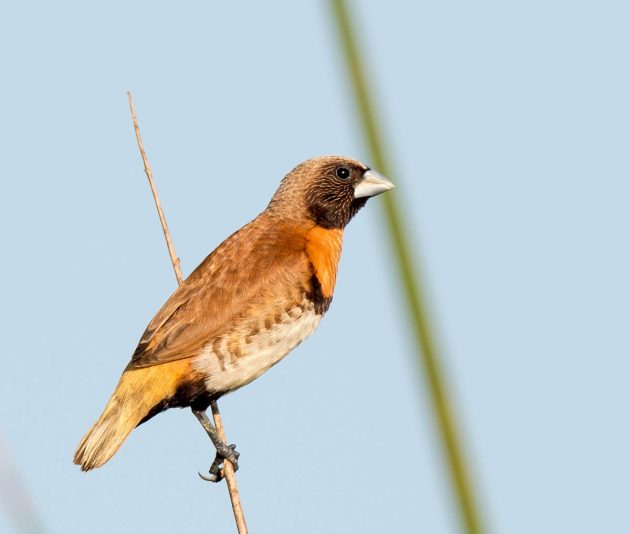
You can search for a Chestnut-breasted Mannikin drinking among other birds in Clare’s post.
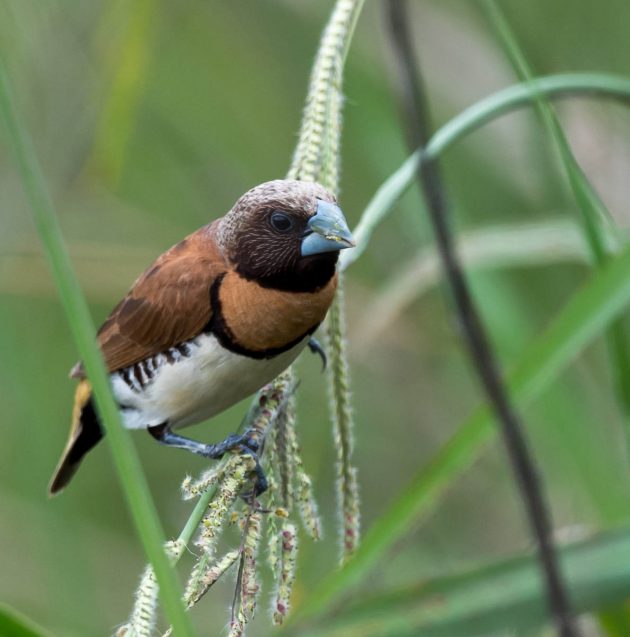
The Crimson Chat is a species found in arid inland areas – for example, densities of up to 3·7 birds/ha were recorded at the delightfully named Lake Disappointment in Western Australia.
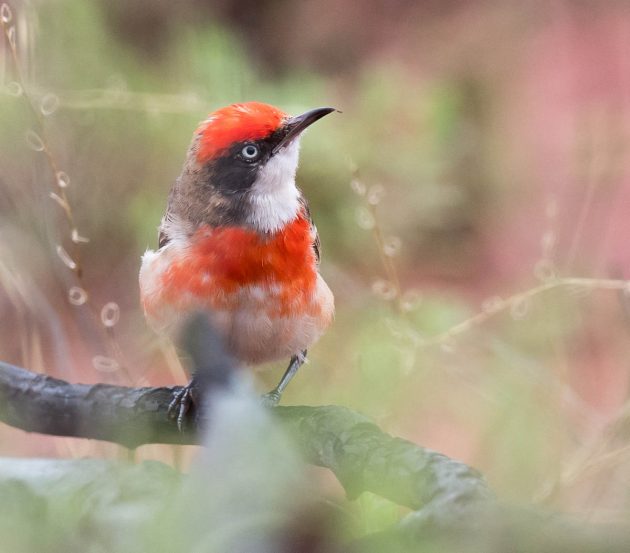
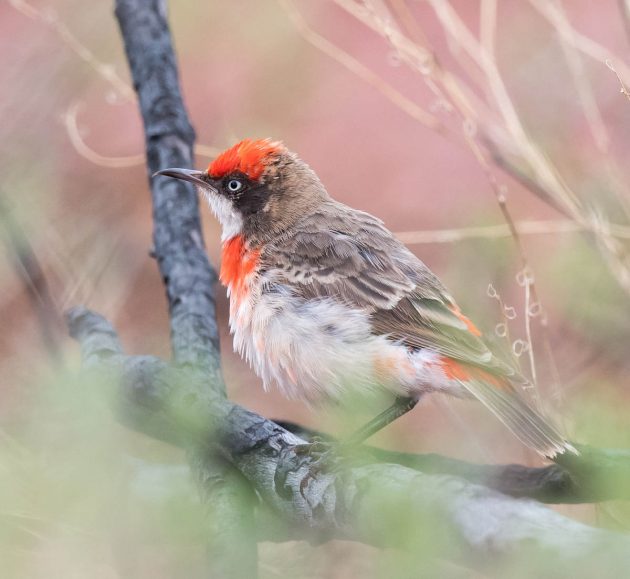
As usual, the male looks quite a bit flashier than the female.
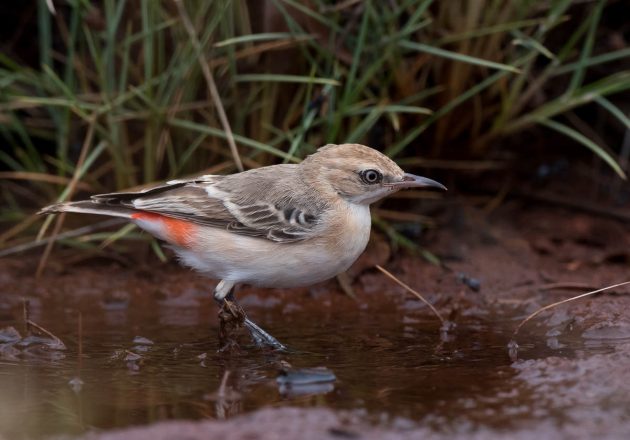

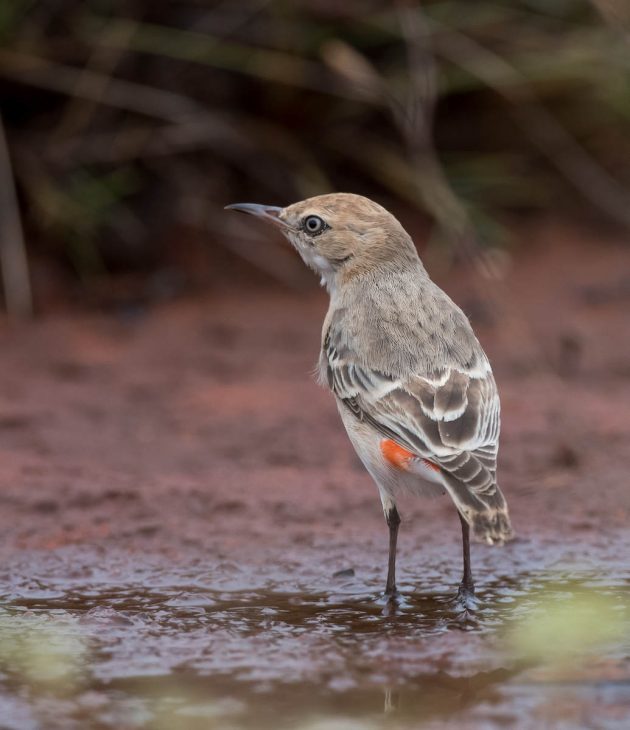

Crimson Chat is also the name of a beer brewed by a US brewery. Drinking there, you can apparently earn such strange and dubious merits as the “Land of the Free (Level 6) badge”. Americans. To get to level 7, you presumably have to ask for a side order of Freedom Fries.
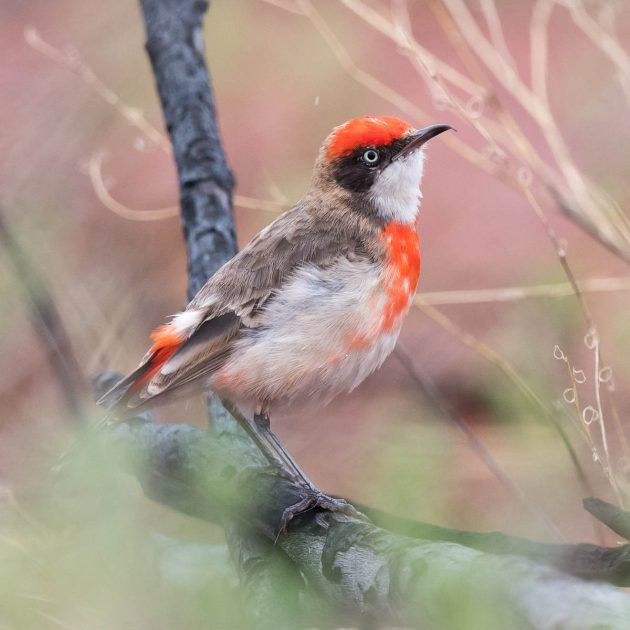
Australia’s Pied Stilt is in the same genus (Himantopus) as the Black-winged Stilt common here in Shanghai. It looks fairly similar too, with both sharing black wings but the Pied Stilt has an additional black collar and neck.
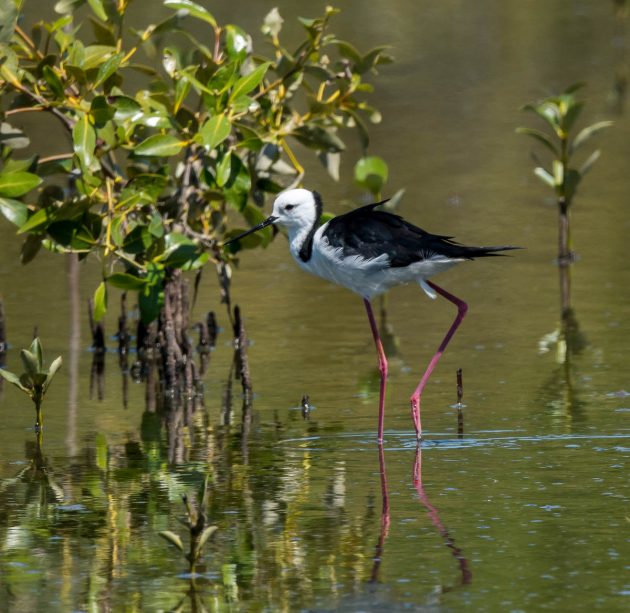
I think this is a juvenile Grey Fantail.
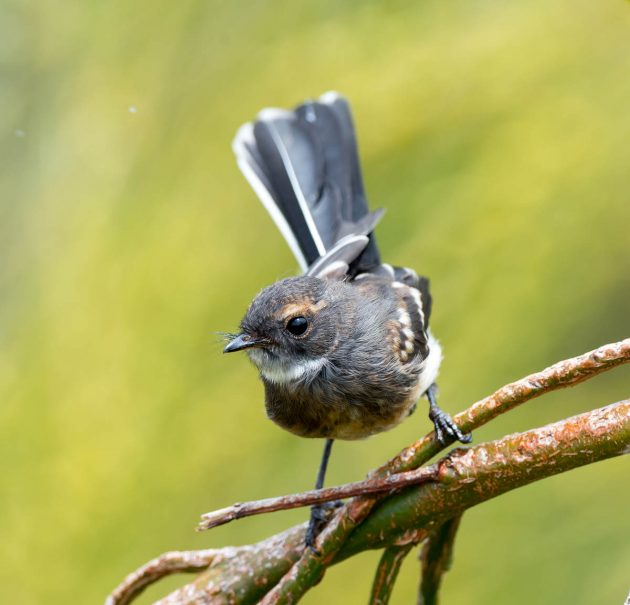
This means its parents did not abandon the incomplete nest, as they do when a potential predator is nearby:
“Grey Fantails desert incomplete nests in response to the attention of predators [which we tested] by placing a mounted Pied Currawong (Strepera graculina), a common nest predator, near fantail nests that were under construction.” (source)
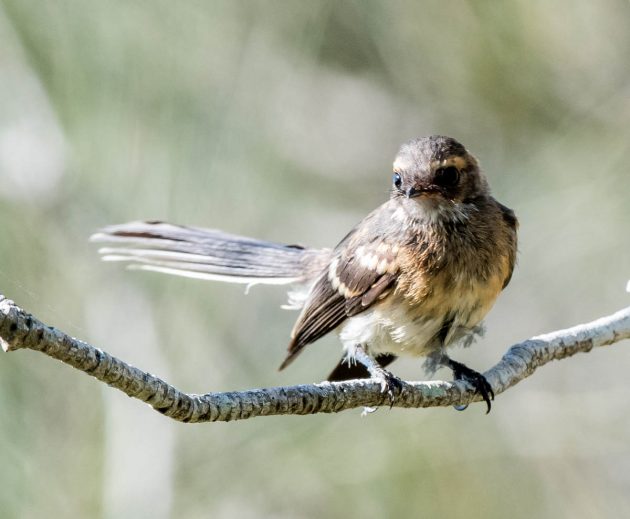
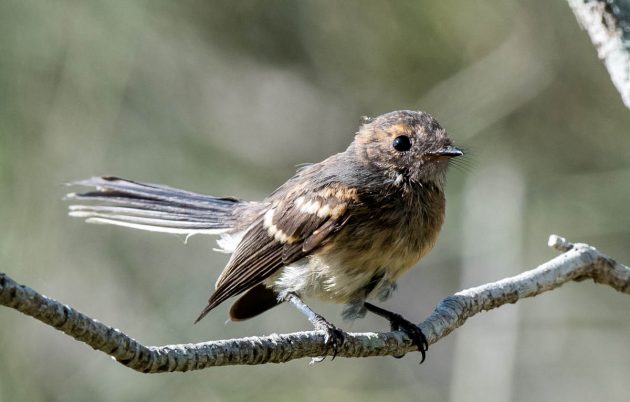
The Crimson Rosella usually mercifully restricts itself to just two main colors – a feat of modesty by parrot standards. Or of elegance – the Latin species name is elegans.
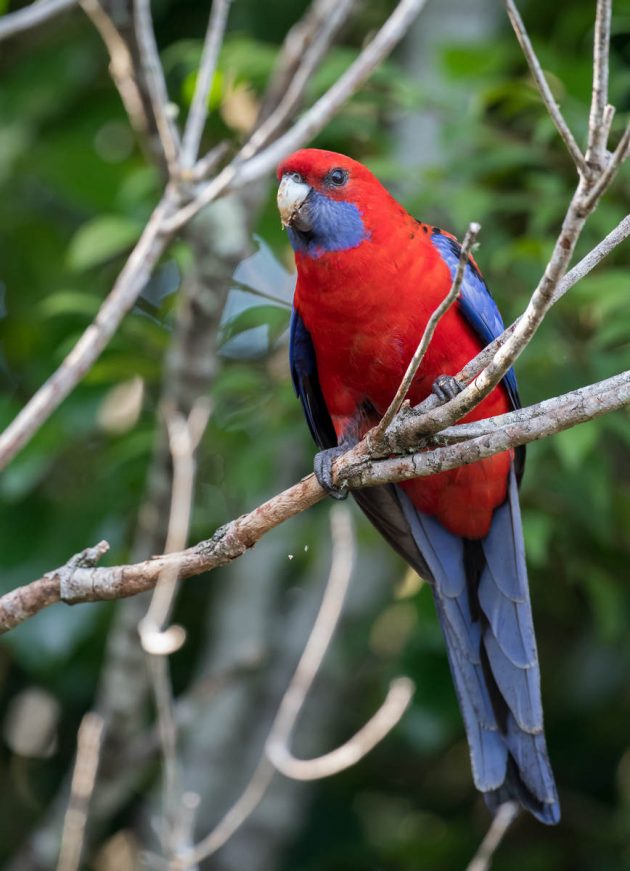
While it is widely kept as a caged bird outside of Australia, it is less popular within the country – for a fairly simple reason: “it has never been widely kept as an aviary bird in Australia due, no doubt, to it being such a common species in the wild” (source).
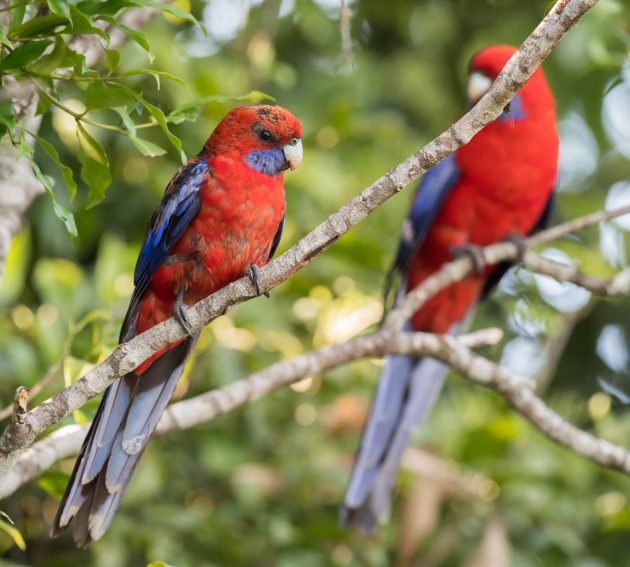
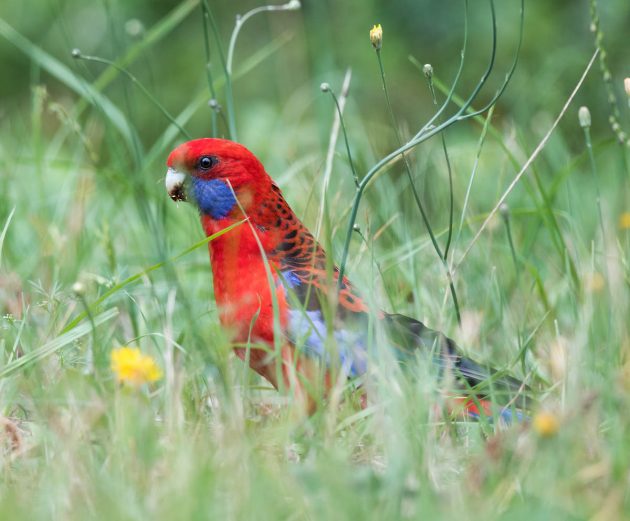
The Comb-crested Jacana has a couple of other names, some of which are quite amusing – the lotus bird, lily trotter, or Jesus bird, the latter for its ability to seemingly walk on water. In this species (as in other jacanas), the females get by abandoning their partner after laying eggs and leaving incubation and chick-rearing to the males.
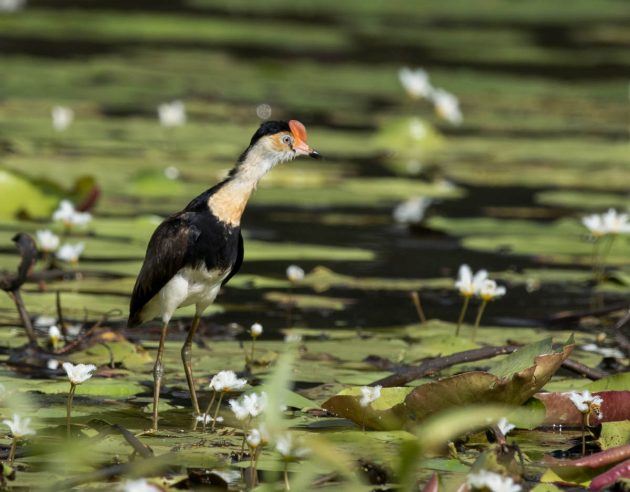
The Brown Quail is the only quail I have seen in Australia – in Brisbane, to be specific, where it is supposed to be by far the most common quail species. Nice to encounter a quail that is not as shy as the ones here in China!
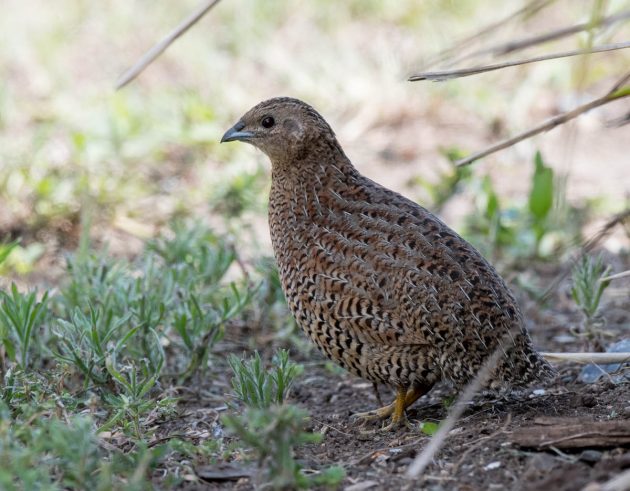
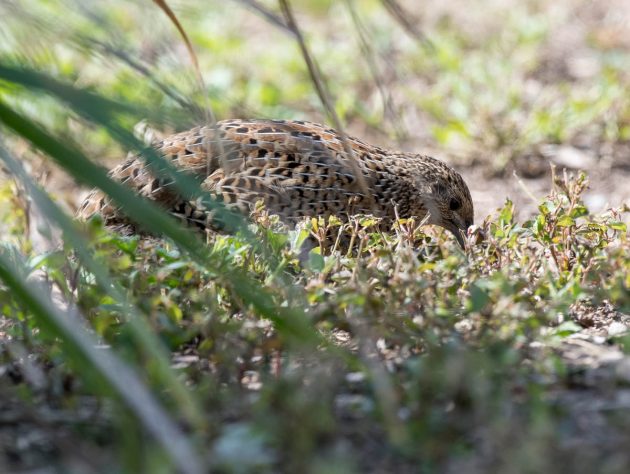
I think Brown Quail would also be a good name for a slightly boring indie guitar band.
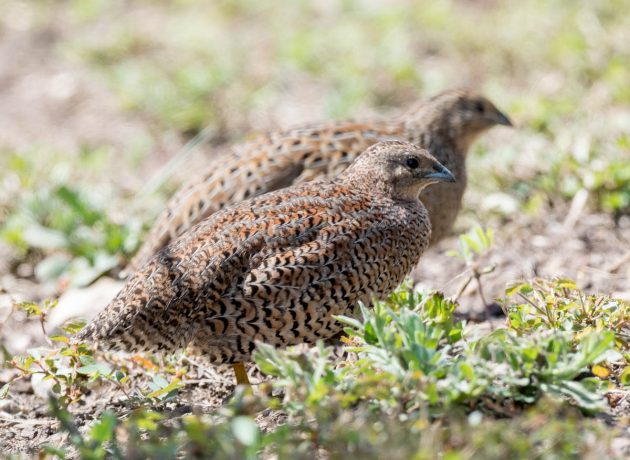
I would probably listen to them.













Leave a Comment